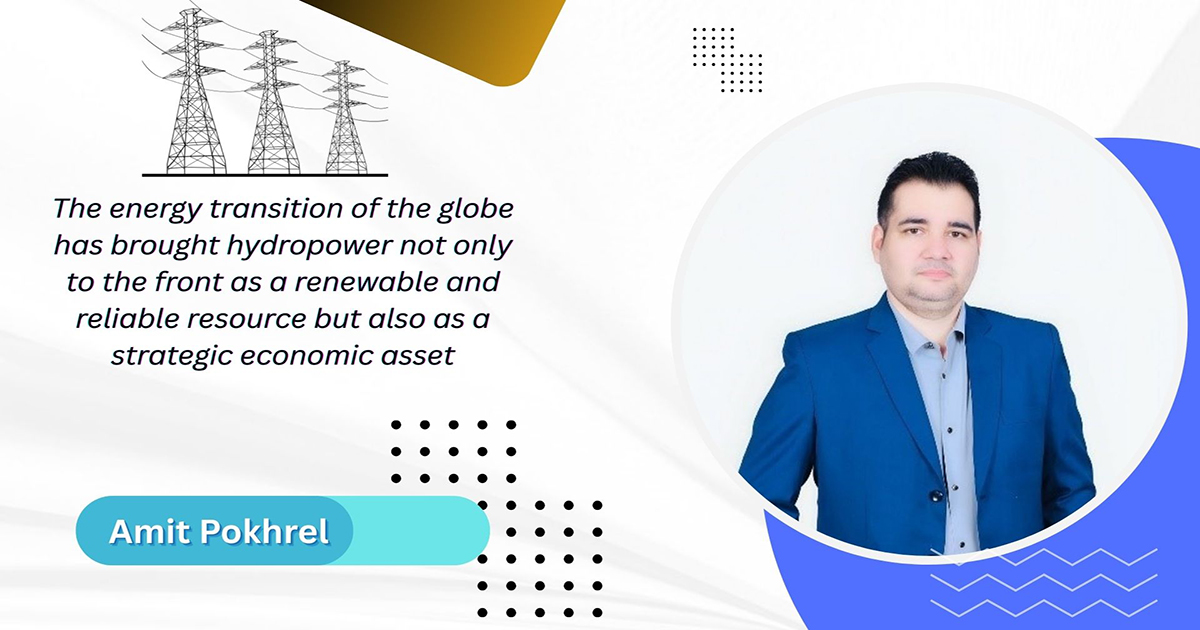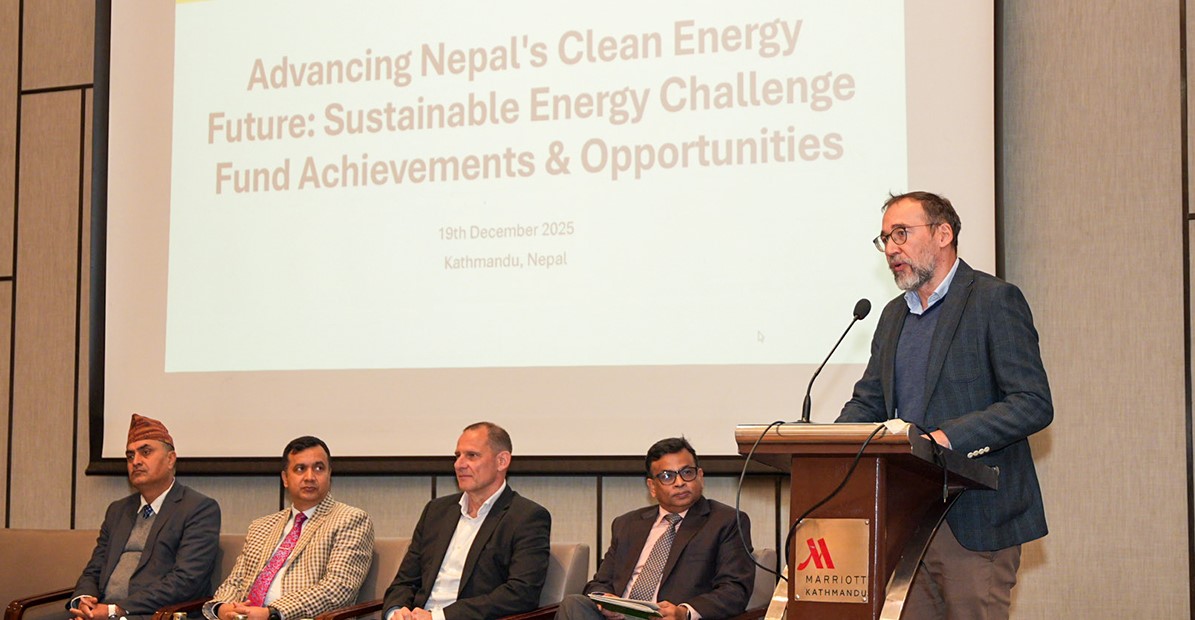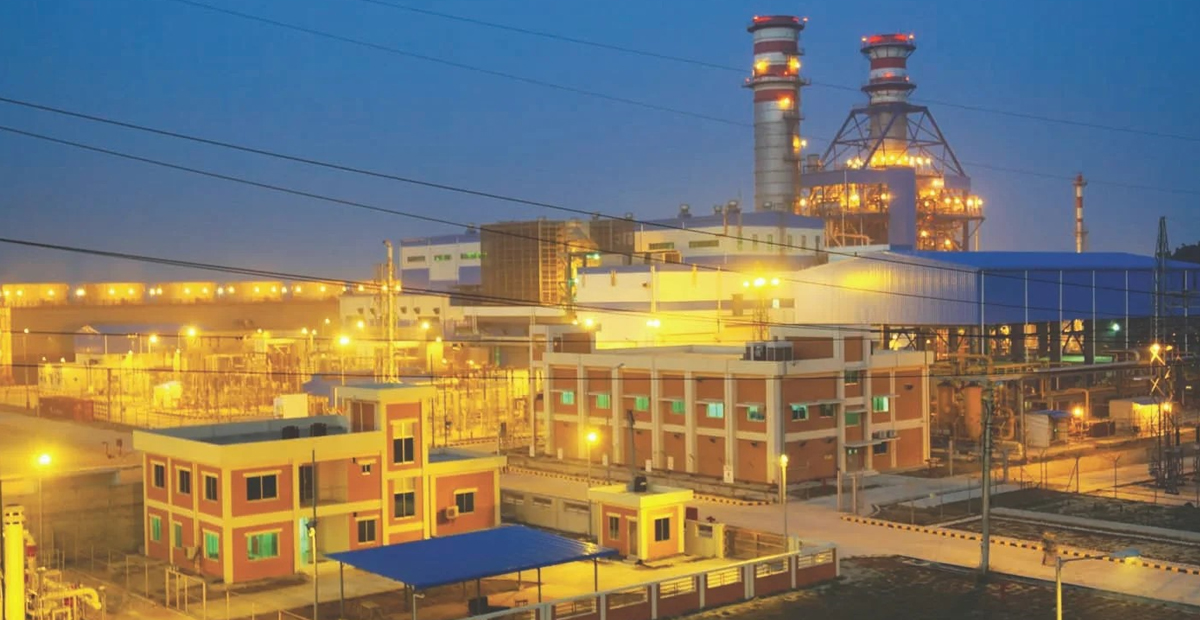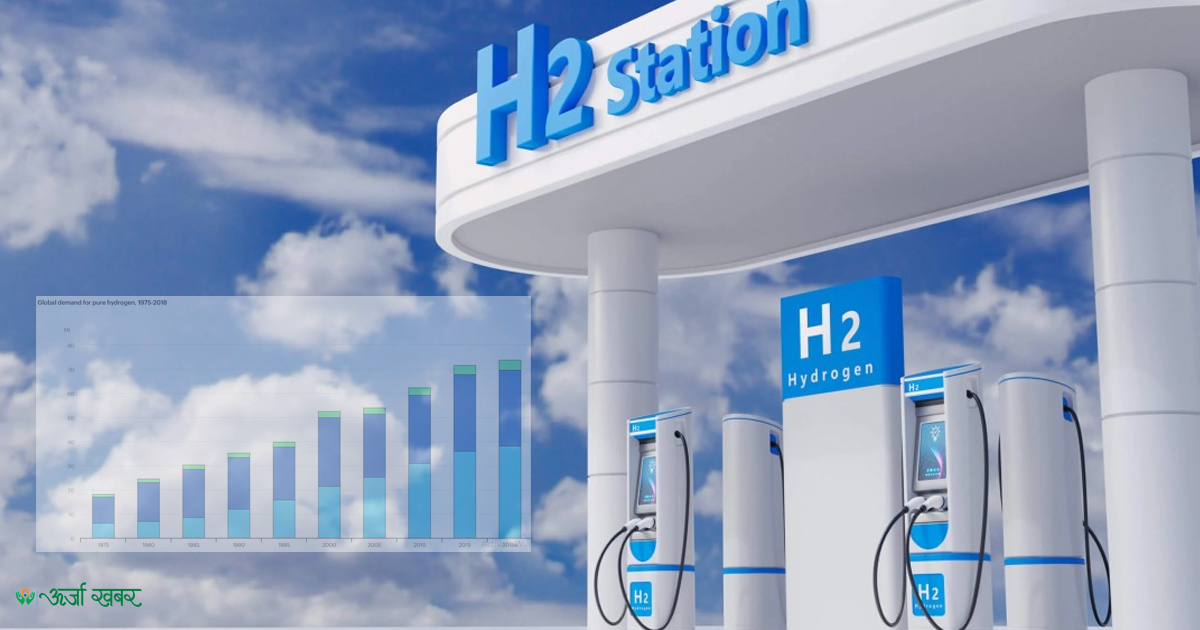Energy Update
SARI/EI's 22-years journey ended with the Delhi conference
Changing Dimension in Cross Border Regional Electricity Trade
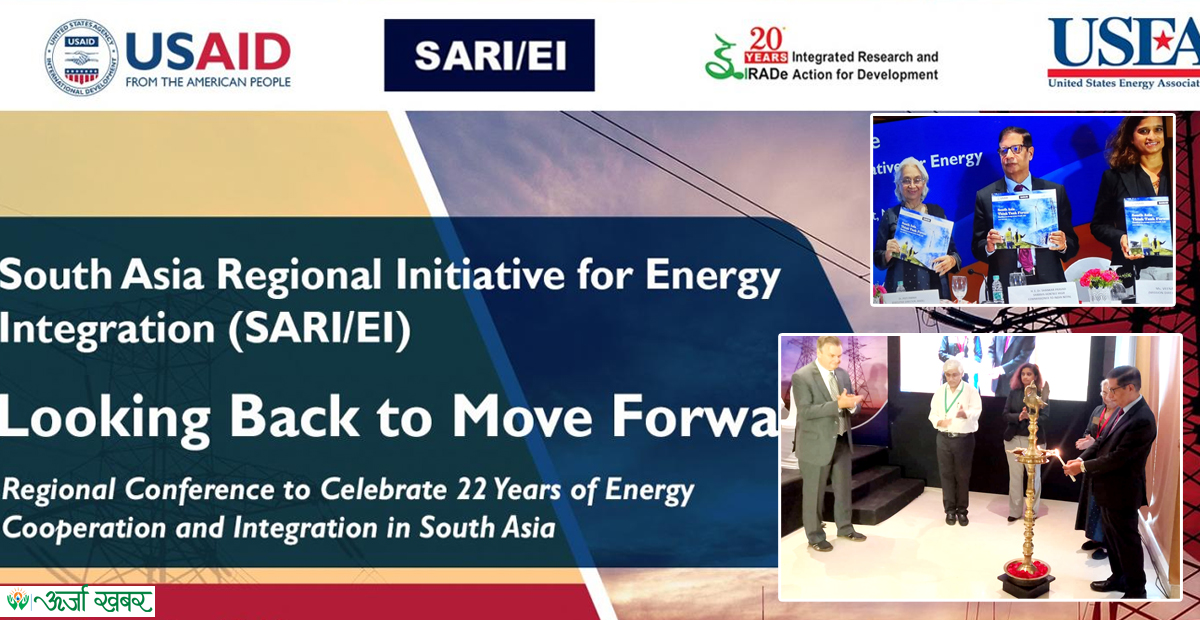
New Delhi (India); The South Asia Regional Initiative for Energy (SARI/EI) Program has officially come to an end after completion of its programs in four phases.
The United States Agency for International Development (USAID) launched the program 22 years ago, aiming to establish foundation for electricity related infrastructure in South Asia that are concerned with capacity building, energy project construction, experience sharing, technology transfers and extension of electricity trading. Over the period, the USAID via the Integrated Research and Action for Development (IRADe) enforced its programs which have been discontinued since the second week of August this year.

It has been concluded that the SARI/EI Program was successful in achieving its target to internalize the learning of electricity trade, sharing experiences, cooperation building in policies development; preparing data bank and opening door for electricity trade in the region. A three-day conference on South Asian Regional Think Tank Forum organized in New Delhi, India, on September 14 ascertained that the program helped expand the scope of regional and cross-border electricity trade. In this context, the SARI/EI Program has been considered a productive.
Since its inception in 2001 that went through September 2022, the SARI/EI had been focusing on the inclusion in the integrated grid, bilateral and multilateral energy talks, discussion and cooperation, and institutionalized and sustainable cross-border energy trading. These efforts have taken the electricity trade to a new height.

Initially, SARI/EI had given priority to capacity building and information sharing related activities. The first phase program prioritized development of social and economic sectors through achieving knowledge, upgraded learnings and regional energy cooperation.
In the second phase held between 2004 and 2007, the program stressed on extension of accessibility to clean energy via market structure reform and facilitating more investment in regional electricity trade. Likewise, it was more focused on reform of policy structure through introduction of new acts, laws and regulations.
Similarly, in the third phase that ran between 2007 and 2012, it targeted on implementation of plans on regional energy security through programs of mutual cooperation. This stage concluded that the cross-border electricity trade achieved a notable reform given the continuity in the activities related to continuation in technical cooperation that gave rise to the development of infrastructure like transmission lines.
The program in its third phase was successful to provide ample support in development of energy market. This had made planners and policy makers understand the actual ground of energy market, latest technologies and implement various methods on risks distribution.
.jpg)
The final 10 years of the program that took place between 2012 and 2022 worked in collaboration with ministries and department concerned of South Asian countries, energy suppliers, experts, diplomats, think-tanks, traders, educationists, regional organizations and multinational development partners. The main task of this phase was to promote integrated cross-border electricity trade in the countries associated with the Bay of Bengal Initiative for Multi-Sectoral Technical and Economic Cooperation (BIMSTEC).
The program was able to play an important role in institutionalizing the agencies of regional electricity market to upgrade their scopes from bilateral to trilateral and from trilateral to multilateral levels. Through enhancing the regional energy cooperation in South Asian countries, the program had also establish a think-tank forum boost capacity of bureaucrats, policy makers, media and civil society members, among others.
Through its roadmap, SARI/EI is entrusted with expanding cross border electricity trade in South Asian countries along with providing access to economy and sustainable electricity. ‘South Asian Regional Energy Partnership (SAREP)’, the other program promoted by the USAID, has taken the strategy to institutionalize the policy provisions and to boost cooperation in regional electricity trade, increase electricity trade in regional and sub-regional basis and to establish the sustainable South Asian electricity market.
Discussions of Delhi Conference:
Of the three day conference held in New Delhi, India, the first day/inaugural session was focused mainly on the technical side and cross-border electricity trade and its achievement and regional tie up. Out of three sessions, the first was cross-border electricity trade and regional connection, the second was optimum utilization of sources focused on hydroelectricity and the third was increasing access of community via media.
The participants expressed their opinion that the countries should go into long term power purchase agreement (PPA) for reliable cross border energy trade. Nepalese Ambassador to India Dr Shankar Prasad Sharma, Former Deputy Executive Director of Nepal Electricity Authority Sher Singh Bhat, Executive Director of IRADe Dr Jyoti Parikh and Project Director of SARI/EI Pankaj Batra, among others, put forth their views over the issue.
The second day started with think tank forum. Including inauguration, there were three sessions organized. Indian State-minister for External Affairs Meenakashi Lekhi, was the guest of honour. Similarly, a discussion was carried out on the role of cross-border electricity trade in expansion of clean energy, data management of electricity-related issues and environment conducive South Asian regional electricity trade
Likewise, in the third and final day, papers were presented and experiences were shared on the title with the theme-alternative to the energy source in the emerging world and importance of cross-border electricity trade. The session was moderated by former electricity secretary of India RV Shahi. Energy secretary of Nepal Sushil Chandra Tiwari and his counterparts-Shri Alok Kumar from India, Mapa Pathirana from Sri Lanka and Habibur Rahman from Bangladesh-put forth their meaningful opinions on scope of regional culture and interconnectivity with electricity.
.jpg)
Excerpts of participants, who presented papers and stated important views on cross-border and regional electricity market expansion:
Meenakashi Lekhi : State Minister for External Affairs of India
.jpg) SARI/EI has not only connected South Asian countries via energy cooperation, but also brought together consciousness and cultural sides. It has also interconnected the human relationship via road and water ways. In addition, all of these relationship are again are linked to energy. This interconnectivity has helped to take us up to an extent of social development.
SARI/EI has not only connected South Asian countries via energy cooperation, but also brought together consciousness and cultural sides. It has also interconnected the human relationship via road and water ways. In addition, all of these relationship are again are linked to energy. This interconnectivity has helped to take us up to an extent of social development.
While we talk about the stability in the region, stability again has to do with energy. Electricity consumption in India, Nepal and Bangladesh has been increasing at an average of 5 percent annually. In concern to production, distribution and consumption of electricity, India has been leading to coordinate among these countries.
India is also the largest producer as well as the largest consumer of electricity in South Asia. This abundance has to be connected to the all the countries in the region. Nepal and Bangladesh have been building gas pipeline system. Still we need to take forward the discussions on how we can replace it with the clean energy system. While talking about clean energy, there is a massive need to optimize use of hydroelectricity, solar and wind sources. Solar energy and wind energy are needed also to transform the country into mixed energy system.
International Solar Agency has been emphasizing to implement ‘one solar, one mega’ type project. There is no other alternatives than to press on flow of clean energy in South Asia via proper technology and investment. While we focus on how the electricity consumption helps improve our living condition, it will develop base for increase domestic consumption.
Dr Shankar Prasad Sharma : Ambassador of Nepal to India
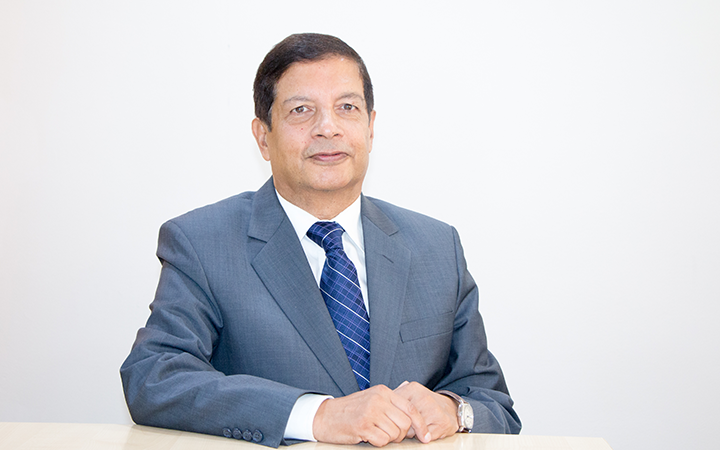
The time has come that we now have to focus on how to expand the dimension of energy trade through carrying out long-term power purchase agreement in the South Asian countries. If we move in an integrated way, we can solve out the problems related to electricity supply climate change. Nepal that has been importing electricity from India for a long time, has now started exporting electricity to India. Over years, Bhutan has also been selling its electricity to India.
Although Bangladesh has been importing electricity from India as of now, the country now looks for switching to renewable energy by importing hydroelectricity from Nepal. This issue needs to be taken for regional discussion. The trilateral talks among Nepal, India and Bangladesh can provide a proper exit in the matter. Nepal has to look forward to coordinating effectively with Bangladesh on construction of 536 MW Sunkoshi-3 Multipurpose Project at a time when Bangladesh is showing interest in construction of the project.
RV Shahi : Former Energy Secretary, Gov. of India
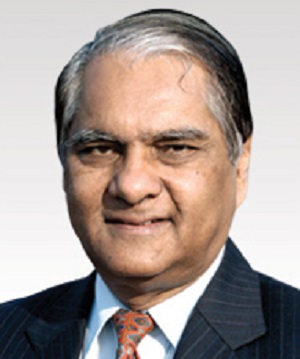 To carry out coordination for energy development and interconnection has now been essential, not an option. It is now being developed in the form of the regional association. India, having per capita consumption of 1,200 KWh, is next to Bhutan in terms of high level of energy consumption. We must be integrated to maintain stability in energy and to gain mutual benefits.
To carry out coordination for energy development and interconnection has now been essential, not an option. It is now being developed in the form of the regional association. India, having per capita consumption of 1,200 KWh, is next to Bhutan in terms of high level of energy consumption. We must be integrated to maintain stability in energy and to gain mutual benefits.
India has a prospect to produce 150 GW of hydroelectricity and 750 GW of solar electricity. Nepal’s potential to produce hydroelectricity stands at around 200 GW, while the country’s current production is only 2 GW. Similarly, Bhutan has a potential of 30 GW. Let’s materialize these potentials of clean energy development. Rather than creating debate on each other for failure, let’s work.
Around 24 percent of the world’s population live in South Asia, where the potential of hydropower generation is 350 GW. Let’s unite to produce and utilize this potential. The transmission lines with Nepal and Bhutan have almost been utilized in their optimum capacity. Therefore, it is now an urgent to develop new transmission lines as soon as possible.
MPDUK Mapa Pathirana : Secretary, Energy and Trade Development, Sri Lanka
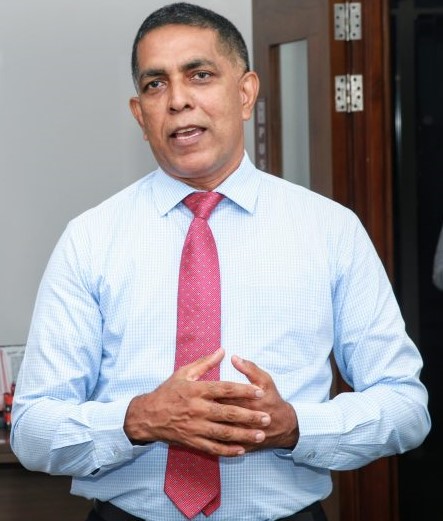 Sri Lanka is now capable to enter regional electricity market system, with regard to the financial and commercial potentials of the country. As Sri Lanka has ample potential to produce solar electricity, we are capable to export electricity. Connectivity through transmission lines is not only trade, rather it is also an opportunity to remain connected with India, Sri Lanka and related regional nations.
Sri Lanka is now capable to enter regional electricity market system, with regard to the financial and commercial potentials of the country. As Sri Lanka has ample potential to produce solar electricity, we are capable to export electricity. Connectivity through transmission lines is not only trade, rather it is also an opportunity to remain connected with India, Sri Lanka and related regional nations.
We wish to invite foreign direct investment by addressing the public and social concerns. We also want to call on interested investors. We should be clear on what modality we want to implement at the regional level.
It is better to discuss on the costs of transmission network and regulatory bodies before moving forward on the matter. How could our electricity compete to up to regional market? Such issues should be finalized through mutual cooperation, coordination and discussion.
Sher Singh Bhat : Former Executive Director, Nepal Electricity Authority
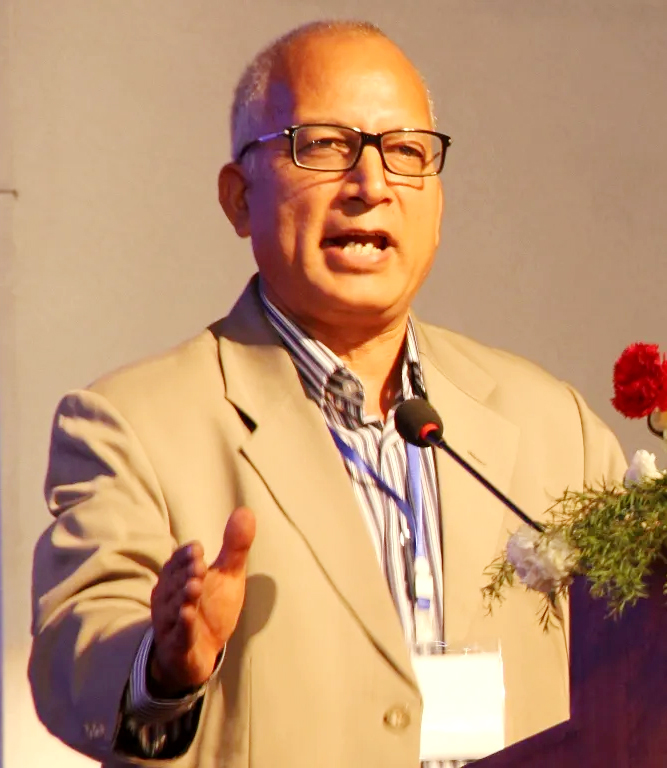 At present, the installed capacity of Nepal has reached around 2,200 MW. Out of this, the peak hour demand is about 1,700 MW. The government has given priority to e-cooking system along with using the electric vehicles in order to increase domestic consumption. As we have mostly the run of river type hydroelectricity projects, we should be able to increase either internal consumption or exports to exhaust the surplus energy produced during rainy season. We can solve this problem if we have sufficient cross-border transmission lines facilities.
At present, the installed capacity of Nepal has reached around 2,200 MW. Out of this, the peak hour demand is about 1,700 MW. The government has given priority to e-cooking system along with using the electric vehicles in order to increase domestic consumption. As we have mostly the run of river type hydroelectricity projects, we should be able to increase either internal consumption or exports to exhaust the surplus energy produced during rainy season. We can solve this problem if we have sufficient cross-border transmission lines facilities.
Long-term power purchase agreement is the only option while talking about the regional and inter-country electricity trade. The ongoing electricity trade between Nepal and India, including day-ahead markets, are also short term in nature. That’s why we should go into long term PPA if we wished to make sustainable the energy security and regional electricity trade. In view of developing the regional market, it is seen essential to join hands to construct high capacity transmission line and big multipurpose hydroelectricity projects.
Dorji Pabho Punsok : Energy Expert, Institute of Happiness, Bhutan
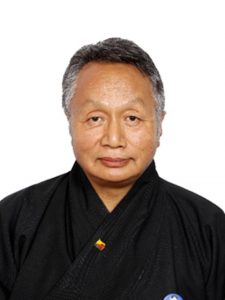 As of now, all the produced electricity in Bhutan is hydropower. The country’s total installed capacity has reached 2,326 MW while the peak hour demand is just 435 MW. Similarly, 2,938 MW of new hydropower projects are under construction. As all the hydropower projects are of run of river type, we have been selling surplus energy to India. We have been exporting around 63.3 percent of the produced electricity to India.
As of now, all the produced electricity in Bhutan is hydropower. The country’s total installed capacity has reached 2,326 MW while the peak hour demand is just 435 MW. Similarly, 2,938 MW of new hydropower projects are under construction. As all the hydropower projects are of run of river type, we have been selling surplus energy to India. We have been exporting around 63.3 percent of the produced electricity to India.
Since last year, Bhutan has been importing electricity for three months from India to maintain balance between demand for and supply of electricity in the country. Bhutan and India have collaboratively been constructing projects of 2,136 MW of capacity in public-private-partnership model. In 2020, electricity contributed around 17.8 percent of Bhutan’s GDP.
Around 61 percent of the Asia’s demand for energy is being fulfilled by fossil fuels. In South Asia, 75.7 percent of the energy demand is met by coal and fossil fuels. Out of the total energy supply globally, 16.3 percent is hydroelectricity while South Asia holds prospect to produce 12.4 percent. Out of South Asia’s total potential, 190 projects are of reservoir types and 90 percent of them are pump storage projects, studies show. At a time when the world is transforming slowly into clean energy, the countries like Bhutan, India and Nepal have to take their hydropower resources to optimum utilizations.
Arju Afrin Kathy : Energy Researcher, University of Dhaka, Bangladesh
 The Russia-Ukraine war has taught a lesson not only the European countries, but also the entire world that energy security is indispensable. There are ample sources of energy development in South Asia. As the regional integrity is given much importance, it has paved a way for realization of the untapped potentials of cross-border energy trade.
The Russia-Ukraine war has taught a lesson not only the European countries, but also the entire world that energy security is indispensable. There are ample sources of energy development in South Asia. As the regional integrity is given much importance, it has paved a way for realization of the untapped potentials of cross-border energy trade.
The think-tank conference held in New Delhi came up with an important conclusion. If proper discussions are conducted on potentials of energy development in the South Asian countries, it will help policy makers to work on regional energy security on practical and time relative bases.
The conference has provided an opportunity to take into discussion the potential and underlying hurdles of cross-border energy trade in South Asia. It analyzed various aspects including international experiences to help countries, looking forward to entering regional electricity market, at their policy levels. This shows immense potentials for the South Asian countries to cater benefits in the future.
Conversation

Laxman Biyogi
Laxman Biyogi has been serving as the editor of Urja Khabar for the past seven years.
- Info. Dept. Reg. No. : 254/073/74
- Telephone : +977-1-5321303
- Email : [email protected]





